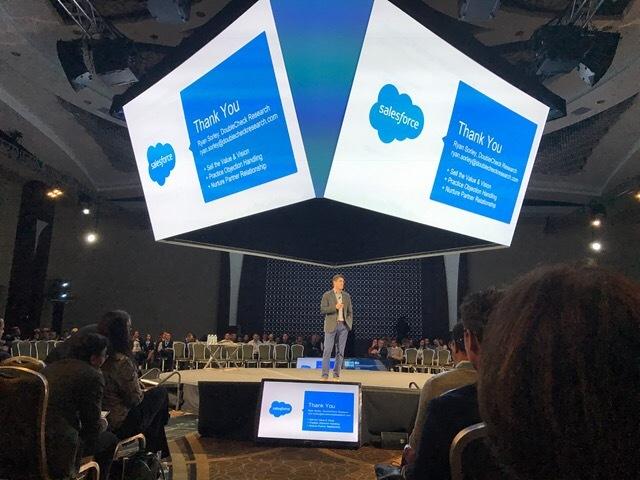With January fast approaching, another sales kickoff waits on the horizon. As sales executives finalize their agendas and prepare for another four or five days in a hotel conference room (in a warm destination, if you’re lucky), there’s one key topic that should not be missed—a win/loss roundup for 2022.
In support of your roundup, here are five key ways to maximize the effectiveness of your win/loss analysis, leading teams to maximize their understanding of where you win, where you lose, and why:
⛔ Don’t focus on your wins only.
Losses provide equally helpful feedback, if not more so, on areas in need of improvement. Whether it’s insight into a reoccurring weakness in your sales process, a feature gap within the product, or consistent deals lost to the same competitor, data analysis from losses over time can provide clear guidance on where organizations need to make changes and improve outcomes.
👫 Get feedback from people other than your reps.
In my experience, this is important for a variety of reasons, but here are two:
- It can be hard for reps to be objective. Oftentimes, they feel that it’s not always in their best interests to be completely honest about why they lost the deal. Maybe they don’t know even know why they lost! After all, customers aren’t always comfortable sharing the real reasons behind their final decisions.
- Speaking of customers, they often find it easier to share post-sales insight with a third party that works outside of the sales organization. This may be to preserve a future relationship or protect their integrity. Regardless, this “outsider” approach can provide the best insight, and thus help drive actionable change.
🖼️ Include high-quality quantitative and qualitative data to see the whole picture.
A comprehensive look at where you are winning and losing requires insight into both qualitative and quantitative metrics. This part of the win-loss review is only as good as the data gathered, and a few simple tweaks can make all the difference:
- If you use a CRM platform like Salesforce, be sure that the data you are pulling is accurate and that the questions you are asking are broad enough to provide interesting information. Establish a criteria list of what you want to know, and ensure that your reps are trained and operationally aware of the importance of inputting data in a systematic way that benefits them in the long term.
- For qualitative data, ensure that all participants of the deal are included in the feedback-gathering process—rep, sales manager, partner, and, obviously, the buyer. And remember: it often helps to have someone outside of the sales organization or a third party owning this process.
💡 Provide analysis, not just data.
Be sure to include a thorough analysis of the data you have gathered from various constituencies. Having a rep on stage talking through how he or she won the biggest deal of the year certainly has its place, and it can be excellent motivation for the rest of the team. However, including a wrap-up or asking each presenter to add an analysis and recommendations section to their presentations are important to understanding what is helping or preventing your sales organization from winning in the field and what next steps are required.
🌎 Stay global.
In most cases, you have invited your entire extended international field organization and remote offices to this event. When selecting accounts to highlight in the win/loss roundup, be sure to include reps and deals from different regions. This provides an excellent opportunity for collaborative learning and knowledge sharing between teams, helping them to better understand best practices from a global perspective.
👣 Final Steps
Your hard work is done. You uncovered the data, and your analyses and recommendations are complete. Create an action plan that includes training and enablement around your key findings, as well as a timeline and roadmap to execution where appropriate. Information stays stagnant unless something is done with it, so ensure that everyone knows his or her role in order to take action on what has been learned.
By acting on the steps provided here, you’re well on your way to seeing improvements in your sales team’s performance in 2017.
Want to learn more about win/loss analysis? Check out some of our other awesome content.
Become a DoubleCheck Insider!


